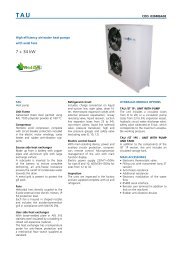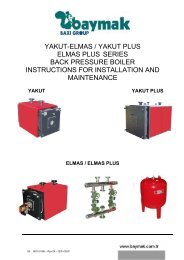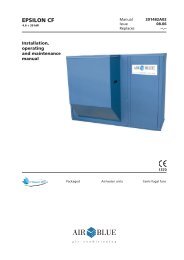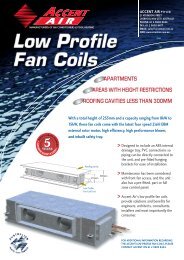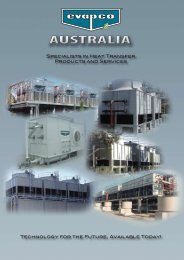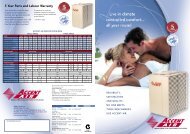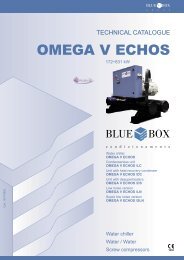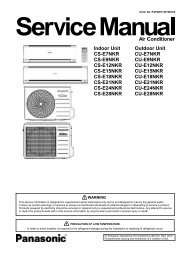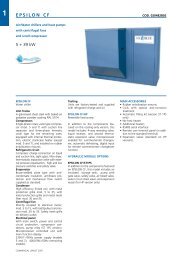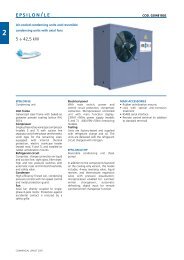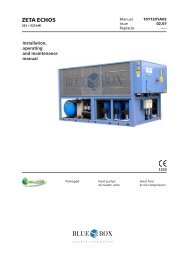Plate Heat Exchangers for Marine Applications - Gulf Sondex
Plate Heat Exchangers for Marine Applications - Gulf Sondex
Plate Heat Exchangers for Marine Applications - Gulf Sondex
Create successful ePaper yourself
Turn your PDF publications into a flip-book with our unique Google optimized e-Paper software.
The Cooling System<br />
Most cooling systems are made as central cooling systems, which means that there<br />
is only one or two bigger plate heat exchangers equipped with titanium plates.<br />
Titanium is the only material that can withstand the aggressive seawater without<br />
corrosion damages on the plates in the heat exchanger. This means that the central<br />
cooler can operate without problems using seawater as the cooling media <strong>for</strong> the<br />
internal freshwater cooling system.<br />
The advantage of a central cooler is that the use of the corrosive seawater is limited<br />
to one or two plate heat exchangers, and thereby the use of exotic material <strong>for</strong> the<br />
plate heat exchanger and the seawater pipeline is limited to a minimum, which will<br />
reduce the corrosion damage in the cooling system.<br />
The rest of the plate heat exchangers is normally equipped with stainless steel<br />
plates there is no corrosion risk as the heat exchangers work with freshwater.<br />
1. Main Engine<br />
2. Auxiliary Engine<br />
3. <strong>Heat</strong> exchanger <strong>for</strong> Central <strong>Heat</strong>ing<br />
4. Freshwater Generator<br />
5. Central Cooler<br />
6. Gear Oil Cooler<br />
7. Lubricating Oil Cooler, Auxiliary Engine<br />
8. Lubricating Oil Cooler, Main Engine<br />
9. Seawater Filter<br />
10. Seawater Pump<br />
11. Freshwater Pump





